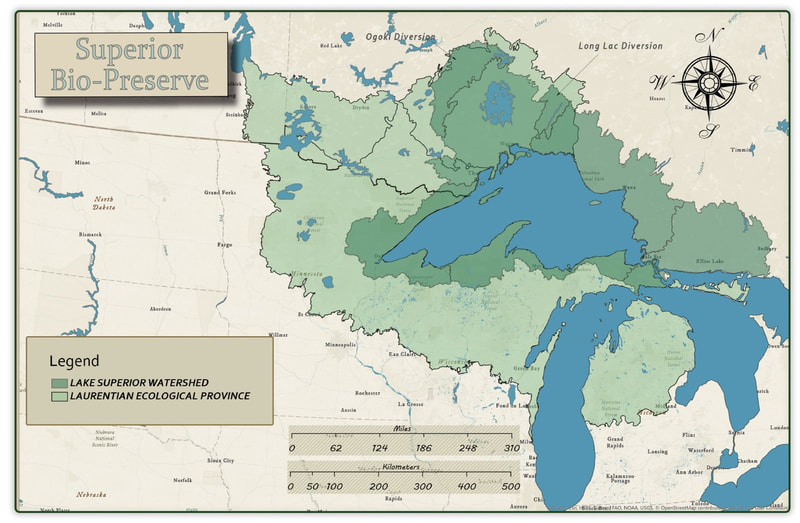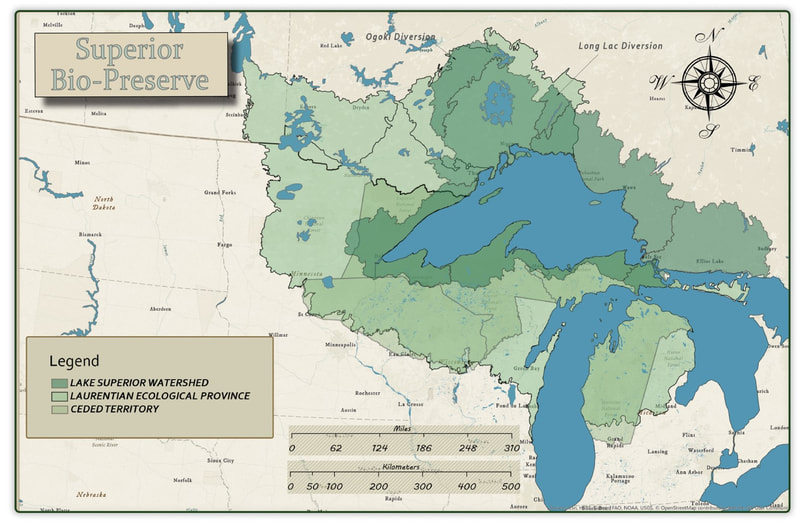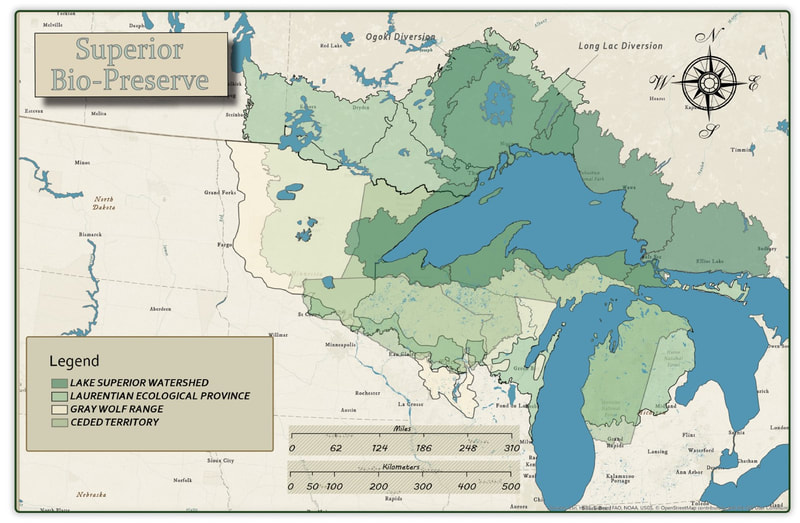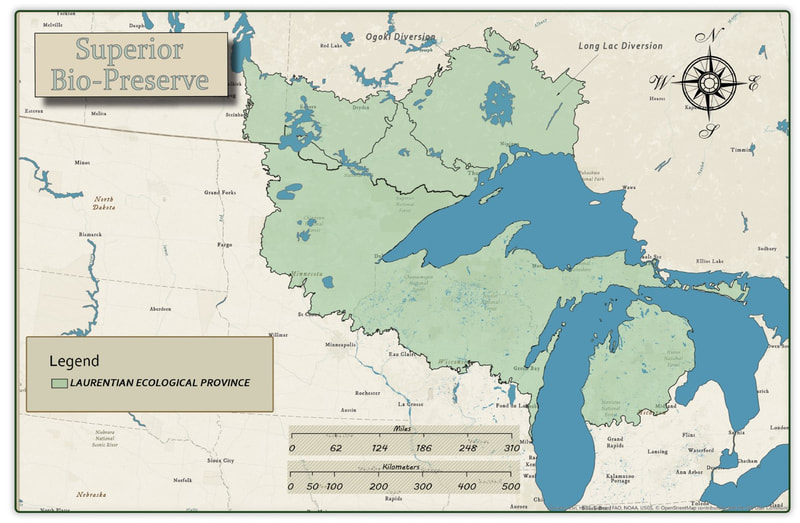A health plan for the Great Lakes Region
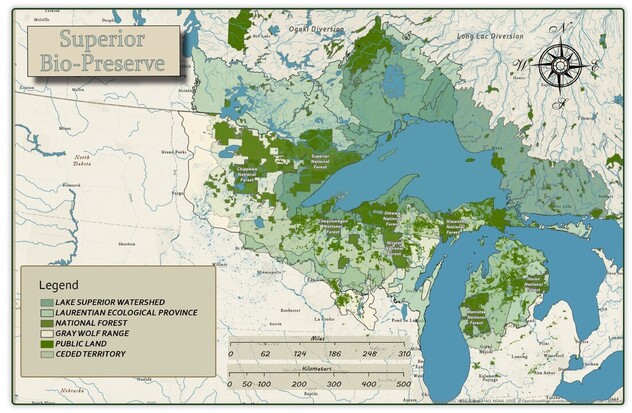 Click for a larger view.
Click for a larger view.
The Superior Bio-Conservancy is an ambitious plan to protect and restore the biological integrity and hydrology of the Great Lakes Region and the Laurentian Forest Province throughout Minnesota, Wisconsin, and Michigan. The goal is to restore and support biodiversity, genetic exchange, ecosystem services and evolutionary processes for future generations. This will be a health care plan for this Bio-Region of the Earth.
Lake Superior is the largest and purist fresh water lake in the Western Hemisphere. It’s critical to protect its’ ecology and watershed from becoming ruined. The Laurentian Forest Province is the “north woods” bio-region of the Western Great Lakes. This includes parts of Wisconsin, Minnesota, Michigan and Ontario.
Our collaborative conservation plan will effectively advocate for the creation of protected wildlife corridors to connect large tracts of public forest lands (Federal, State and County) to avoid fragmentation and restore bio-diversity in the face of mass extinctions. To help us during climate change we need to restore and expand forests capacity to remove carbon. Forests are carbon sponges and can significantly lower the CO/2 carbon in the atmosphere. Older growth forests store more carbon and support greater biodiversity.
Lake Superior is the largest and purist fresh water lake in the Western Hemisphere. It’s critical to protect its’ ecology and watershed from becoming ruined. The Laurentian Forest Province is the “north woods” bio-region of the Western Great Lakes. This includes parts of Wisconsin, Minnesota, Michigan and Ontario.
Our collaborative conservation plan will effectively advocate for the creation of protected wildlife corridors to connect large tracts of public forest lands (Federal, State and County) to avoid fragmentation and restore bio-diversity in the face of mass extinctions. To help us during climate change we need to restore and expand forests capacity to remove carbon. Forests are carbon sponges and can significantly lower the CO/2 carbon in the atmosphere. Older growth forests store more carbon and support greater biodiversity.
Fortunately, this landscape has unique Tribal ceded usufructuary rights that protect biodiversity. Those rights are sovereign and serve as a protective conservation easement on all public lands. This plan will utilize those covenants to aid in establishing a land ethic for the Superior Bio-Conservancy. Those first nation values of respecting “mother earth” benefit us all and are fundamental to life.
All species play a unique part in maintaining an intact wildlife structure. Keystone species recovery needs to be a priority. Both wolves and beaver are keystone species that create trophic cascades that benefit other species. Beavers as ecosystem engineers create wetlands that support biodiversity and restore the hydrology of rivers, improving water quality and stabilize watersheds. Beaver created wetlands are the gardens of productivity for insects, reptiles, amphibians, fish, birds and mammals.
All species play a unique part in maintaining an intact wildlife structure. Keystone species recovery needs to be a priority. Both wolves and beaver are keystone species that create trophic cascades that benefit other species. Beavers as ecosystem engineers create wetlands that support biodiversity and restore the hydrology of rivers, improving water quality and stabilize watersheds. Beaver created wetlands are the gardens of productivity for insects, reptiles, amphibians, fish, birds and mammals.
Regional aspects of the Superior Bio-Conservancy
Click images for a larger view.
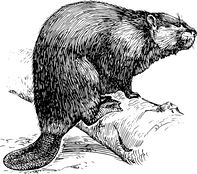
Prior to settlement (pre-1600) the Western Great lakes landscape had one of the highest beaver population densities in North America, averaging 20 to 30 beavers per square mile. Beaver colonies dominated the rivers and streams. Established over generations, beaver wetland complex dams formed stair step gradients on all the rivers and streams in this region. These wetland complexes were rich habitats that supported vast wildlife communities. The hydrology of the wetlands complexes cleaned the waters and stabilized flow volumes during wet and dry periods. They also stabilized stream temperatures, cooling base flows during the summer and warming the water in winter. Over winter survival of many species is higher in beaver ponds because of water temperature stability. This effort will advocate for a “Land Ethic” and the protection and management of beaver populations across this bio-region to restore biodiversity and the natal watershed hydrology of Lake Superior.
"A thing is right when it tends to preserve the integrity, stability and beauty of the biotic community. It is wrong when it tends otherwise." ~ Aldo Leopold
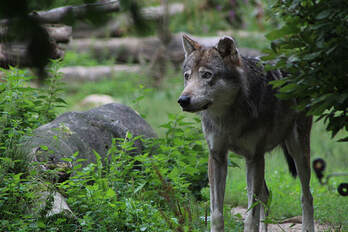
Currently the landscape of the North Woods in the Western Great Lakes is still permeable and biological intact enough to allow for a full restoration. The globally significant, successful recolonization of US wolves from less than 200 in 1973, to over 4,000 in 2019 in the Western Great Lakes (WGL) is evidence of that. Across the WGL, the recovery of beaver populations (just like wolves) is critical to preserving biodiversity and water quality.
Wolves effect the behavior of deer, the primary herbivore in forests. Deer will remove as much as 40% of the plant diversity by browsing those plants out of the forest composition. When wolves are present, the feeding behavior of deer is changed by their fear of wolves and they avoid central den and rendezvous areas. This allows for browse species favored by deer to reestablish and thrive. This trophic cascade effect makes for a more resilient forest community structure. As wolves have recovered, species richness in forests has recovered, demonstrating this benefit. In the face of climate change, the health of our forests capacity to store carbon, needs to be robust. Forests are stronger, healthier and have greater biodiversity with wolves. The wolf is a friend to the forest and we benefit with landscape health. Balanced predator prey wildlife populations and native plant diversity is the foundation of land health. You need all the parts and pieces to make the machinery of nature hum in tune.
Using the science of Conservation Biology to guide public policy, action is needed now, given climate change and current extinction rates. The urgency is alarming given the utter absence of meaningful leadership in Governance or the Public Natural resource agencies to address these landscape health issues.
Wolves effect the behavior of deer, the primary herbivore in forests. Deer will remove as much as 40% of the plant diversity by browsing those plants out of the forest composition. When wolves are present, the feeding behavior of deer is changed by their fear of wolves and they avoid central den and rendezvous areas. This allows for browse species favored by deer to reestablish and thrive. This trophic cascade effect makes for a more resilient forest community structure. As wolves have recovered, species richness in forests has recovered, demonstrating this benefit. In the face of climate change, the health of our forests capacity to store carbon, needs to be robust. Forests are stronger, healthier and have greater biodiversity with wolves. The wolf is a friend to the forest and we benefit with landscape health. Balanced predator prey wildlife populations and native plant diversity is the foundation of land health. You need all the parts and pieces to make the machinery of nature hum in tune.
Using the science of Conservation Biology to guide public policy, action is needed now, given climate change and current extinction rates. The urgency is alarming given the utter absence of meaningful leadership in Governance or the Public Natural resource agencies to address these landscape health issues.
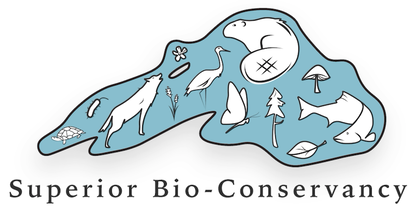
Public land governing agencies and elected officials need to re-focus on restoration and preservation of landscapes. We cannot afford to continue with “Business as Usual” with our shared public land. Federal, State and County agencies have been extraction enablers of the timber and agricultural industry. They have damaged our public land assets and embezzled our children’s inheritance with unscientific land policies. Public and private landscape managers need to have incentives to manage for public landscape health. The “Carbon Market” that exists needs to expand. For example, similar to the model we have to tax tobacco; that same approach could be applied to fossil fuel usage, to pay for conservation incentives to create wildlife corridors on private land.
Those taxes or incentive policies can finance saving ourselves and the planet. Fossil fuel use need to have offsets from the carbon emissions. If the Wisconsin, Northern Highland State Forest in (234,000 acres) carbon credits were sold in the market today, it would yield over $150 Million dollars, to citizens. That action would also increase biodiversity and reduce atmospheric carbon with higher functioning forests. This is fundamental to continuing life on the planet.
We are all in this boat together.
Those taxes or incentive policies can finance saving ourselves and the planet. Fossil fuel use need to have offsets from the carbon emissions. If the Wisconsin, Northern Highland State Forest in (234,000 acres) carbon credits were sold in the market today, it would yield over $150 Million dollars, to citizens. That action would also increase biodiversity and reduce atmospheric carbon with higher functioning forests. This is fundamental to continuing life on the planet.
We are all in this boat together.
Support the creation of the Bio-preserve
LEARNExplore the ways in which beavers and other wildlife naturally manage the forest and create balanced hydrology.
|
DONATESupport our efforts to create the Superior Bio-Conservancy to restore and protect these crucial wild areas.
|
ADVOCATEConnect with fellow conservationists to take action, contact your local officials, and spread the word.
|

